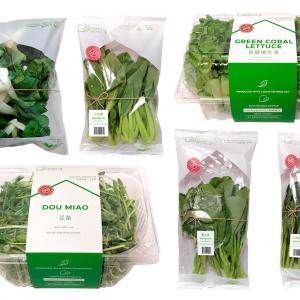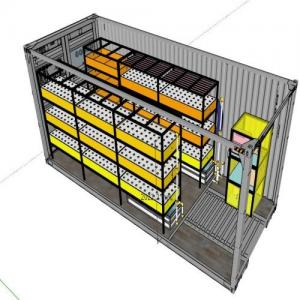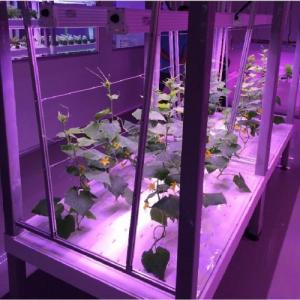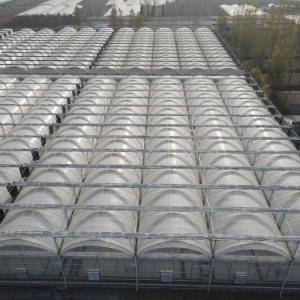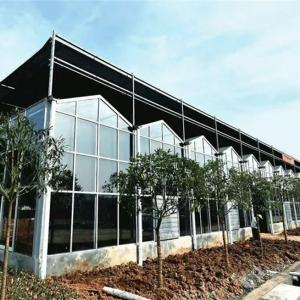Growing Vegetables in a Hydroponic Container in China
A hydroponic container is a great way to grow fresh
vegetables. These special containers make it possible to grow crops all year
round, without being affected by the changing seasons. Furthermore, these
plants have the advantage of being transportable to any destination worldwide,
enabling convenient availability in diverse global markets.
The containers are made from shipping containers
and can be customized with air flow, plumbing, and electrical systems. They can
also be insulated to control the climate inside.
Transforming Shipping Containers into High-Yield Hydroponic Farms
A typical shipping container can be converted into
a hydroponic farm with the help of LED lights, water, carbon dioxide and nutrients.
By adopting this method, plants can thrive without relying on detrimental
substances such as pesticides and herbicides. Additionally, they can produce
plentiful harvests by utilizing just five gallons of water every day.
This system is known as deep water culture (DWC)
because the roots of the plant are always in a nutrient solution that is
constantly oxygenated. This makes the DWC system much less complicated than
some other types of hydroponics because there is no need for nozzles, feeder
lines or sprayers.
Furthermore, this system removes the necessity of
soil, thereby minimizing the chances of contamination caused by weeds, insects,
and diseases. Moreover, it offers greater control over nutrient supply to
plants, leading to potential savings in nutrition expenses. Additionally, it
simplifies the management of humidity and temperature within the cultivation
area compared to traditional soil-based systems.
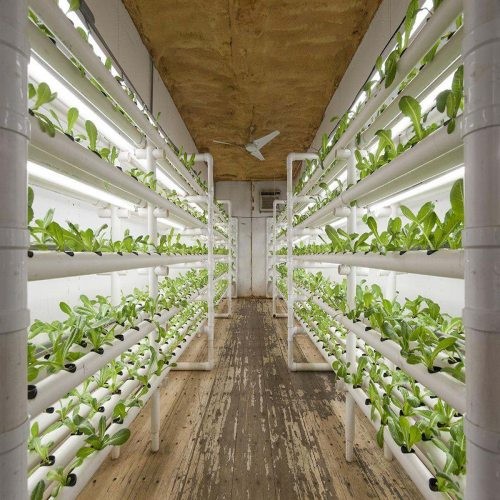
What Kind of Vegetables Can Be Grown in Hydroponic Containers?
Hydroponic containers offer the opportunity to grow
a wide variety of vegetables, although certain types may demand more attentive
maintenance compared to others. For instance, plants with vines and tall
growing structures can pose challenges because they will disrupt the overall
setup and nutrient levels.
Using a container farm, growers can bypass
soil-borne diseases and other issues. The nutrient-rich water in the grow bed
also provides a weed-free environment, which can help prevent costly pesticides
from being used.
The ebb-and-flow system allows you to grow bigger
plants than other hydroponic systems. Leafy greens like kale, spinach, and
lettuce thrive in this type of growing environment. Peppers are another good
vegetable to grow in hydroponic containers.
Winged beans or Psophocarpus tetragonolobus are a
protein-rich vegetable. These plant varieties thrive effortlessly when
cultivated in hydroponic containers and offer a bountiful supply of essential
vitamins and minerals.
How Much Water Do Hydroponic Containers Need?
Plants in hydroponic containers require a balance
of water and nutrients. It’s important to give them a consistent level of these
nutrients and to change the water only at a regular frequency. This helps
plants remain healthier and more resistant to stress, which can be caused by
large swings in environmental conditions.
For achieving the best outcomes, it is generally
advised to refresh the water in a hydroponic container every 2-3 weeks. It’s
also a good idea to add some normal water to the reservoir before using the hydroponic
solution. This helps prevent pockets of hyper-nutrition from occurring in the
container.
The water requirements of a hydroponic plant differ
based on the specific plant species and its developmental phase. Usually,
smaller plants need less water than bigger ones. This is because smaller plants
tend to lose less water through transpiration. In addition, the temperature of
the root zone can influence the amount of water a plant need.
What Kind of Nutrients Do Hydroponic Containers Need?
When grown in soil, plants absorb nutrients through
their roots. In hydroponic containers, those roots nestle in a growing medium
like perlite, clay pebbles or coconut coir. The rate at which plants absorb
water and nutrients can be accelerated depending on their specific plant type.
When making nutrient solutions, the right amount of
each element is important. Adding too many of one or more can cause the
solution to burn or rot the roots. Having the correct pH level is also critical
to nutrient availability. A pH meter, available in pen or handheld designs, is
a good way to check your nutrient solution's acidity.
